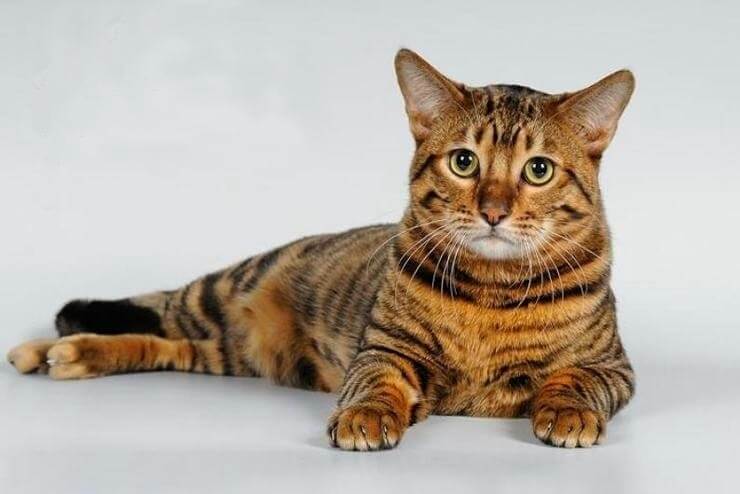You really can’t get more house cats: The Toyger is a breed that should look as similar as possible to its imposing role model from the jungle. Its distinctive striped pattern immediately catches the eye. According to the definition, it is a “designer cat” in which targeted mating should lead to the desired appearance. But the agile cats are much more than just beautiful and exotic: a playful, lovable velvet paw is hidden under the tiger skin.
Toyger: character
Although you wouldn’t expect it given the wildcat model, the Toyger is anything but unapproachable. They are real cuddly cats who demand cuddles from their owners and usually get along well with children and dogs. One notable feature is the Toyger cat’s cleverness.

The animals need a mental challenge in the form of intelligence toys – they are ideal candidates for cat agility or clicker training. Children who know how to play with cats will find a wonderful companion in the Toyger. In addition, the animals were impressed with their self-confident and balanced nature. They rarely act like the offended diva and are not resentful if something doesn’t go their way.
Keeping and caring for the Toyger
A special predisposition for (hereditary) diseases is not known in Toyger cats. They are even considered to be quite robust. Grooming does not place any special demands on the owner: just comb the short, thick coat every now and then. The breed is bred as an apartment cat, so Toygers are ideal pets for city apartments, preferably with a secured balcony or garden.
Even if they don’t have an irrepressible urge for freedom, there’s a lot of power in the little tigers. They want action and variety. Daily extensive play sessions with their humans are a must.
Colors of Toygers
The only acceptable color for the Toyger is a brown tabby pattern with grey, brown, and chocolate hair and a reddish-orange undertone; there are efforts to establish other basic colors (so-called “Snow” and “Silver Toyger” with a white-grey basic color). The strips should be as closed as possible and run with random stretches; in technical jargon, one speaks of a “Mackerel” (mackerel) drawing. Like their wild Asian cousin, many Toygers have a lighter belly and white inner thighs.
The Story of the Toygers
A cat that resembles a tiger on the outside was cat lover Judy Sudgen’s breeding goal in the early 1990s. Through targeted mating, she wanted to reinforce the tabby pattern in such a way that it continued on the face and legs. For this purpose, Sudgen simulated possible crossbreeding results of different cat breeds on the computer.
The progenitors of the breed eventually became a Bengal male and an “ordinary” American tabby shorthair cat. In 1993, a street cat from India brought its spotted ears into the gene pool. The breed has only been officially recognized as the “Californian Toyger” since 2007, but so far only by the American organization The International Cat Association (TICA).

In the meantime, there are also Toyger breeders in Germany. The pedigree cat is expensive: collector’s animals – these are animals that are not used as breeding animals due to small deviations from the breed standard, for example, unwanted markings – cost around 1,300 euros, breeding specimens considerably more.
Peculiarities of the Toyger
Toygers are striped from the head to the tip of the tail – unlike classic tabby cats, the tiger stripes do not blur towards the head and paws, but are clearly defined. The fur is noticeably thick overall, giving it a velvety, plush texture. Another characteristic feature is the high level of intelligence: the cats constantly need new challenges, but they are rather domestic and do not necessarily need freedom. Incidentally, many Toygers, which is quite untypical for cats, are not afraid of water at all.